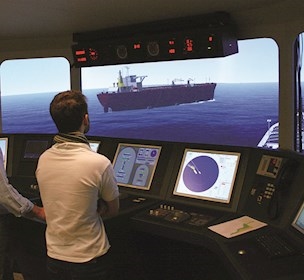FPSO Tandem Mooring
The course aims at providing captains, officers and mooring masters with further knowledge of tandem mooring and ship handling in order to ensure safety of life at sea, property and protection of the marine environment.
Goals and objectives
The course aims at providing captains, officers and mooring masters with further knowledge of tandem mooring and ship handling in order to ensure safety of life at sea, property and protection of the marine environment. In order to obtain these skills, the participants will be trained in tandem operations, practical vessel manoeuvring, and in how to approach and make a tandem mooring with or without tug assistance.
Captains, officers and mooring masters will thereby get an insight into and knowledge of the manoeuvring limitations of a specific vessel as well as knowledge of the environmental influence affecting the vessel's manoeuvrability.
Course description
The tandem mooring course is a partly classroom, partly simulator-based course with focus on improving captains’ and officers’ practical manoeuvring skills during tandem operations. The simulations will be set up using three simulators; one simulator will represent the FPSO (controlled by an instructor), and one will represent the tanker, the third will be a tug simulator representing the assisting tug. Both the tanker and the assisting tug will be controlled by participants. Thereby the participants will have the possibility to improve their skills and develop an understanding of tandem mooring and the possibilities and limitations of making a tandem mooring operation. By request, further simulators can be added for exercises with additional assisting tug of any type.
Gains
After completing the course, the participants will have a thorough knowledge of:
- General principles of tandem operations
- Pre-planning including contingency planning
- Communication during approach, mooring and unmooring
- Emergency aborting of tandem operations
- Executing safe watch-keeping during tandem operations
- Ship handling and manoeuvring during tandem operations
- Use of operational and safety checklists
References: STCW including 2010 Manila amendments, 2017 edition. Table A-II/1 and Table A-II/2


